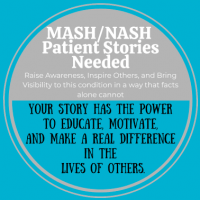Rare Community Profiles

Rare Community Profiles is a new Patient Worthy article series of long-form interviews featuring various stakeholders in the rare disease community, such as patients, their families, advocates, scientists, and more.
From Afraid to Advocate: How Natalie Found Her Power After a Friedreich’s Ataxia Diagnosis
Growing up, Natalie R. was thrown into the sports scene, trying to keep up with her twin sister and stay active. She didn’t have to focus on her coordination, felt as though she could trust in her body to carry her, and moved without much thought.
Then Natalie started to seem off-balance, and in her senior year of college, her family noticed something was off. Natalie explains:
“When I was home from college, my family would sometimes have impromptu dance parties in the kitchen. While dancing, I would get wobbly. My dad pointed it out and told me I should see a doctor.”
Around the same time, Natalie was training for a half-marathon with her roommates. She was in decent running shape, but suddenly, it became increasingly difficult to complete anything over three miles. Her movements felt clunky, her body fatigued.
A vitamin deficiency—that’s the first suggestion her school’s Student Health made. Test after test, however, came back showing no deficiencies. The doctors were stumped. Each visit, Natalie managed the questions lobbed in her direction. Then came a breakthrough. Natalie mentioned that she had felt clumsier recently. Student Health sent her to a neurologist.
This was the start of her Friedreich’s ataxia journey.
About Friedreich’s Ataxia (FA)
Normally, the FXN gene encodes for the production of frataxin, a protein that plays a role in mitochondrial function and energy. Friedreich’s ataxia is a rare genetic neuromuscular disease caused by FXN gene mutations; frataxin deficiency leads to cellular tissue degeneration. This disease causes neurological and movement issues that often begin between ages five and 18. Although FA can occur in older individuals (known as late-onset or very-late-onset, depending on age), it is much less common.
Symptoms and manifestations of Friedreich’s ataxia can include:
- Ataxia (poor movement coordination)
- Scoliosis (abnormal spinal curvature)
- Slurred speech
- An unsteady gait
- Dysphagia (difficulty swallowing)
- Fatigue
- Shortness of breath
- Diabetes mellitus, often insulin-dependent
- Chest pain
- Foot abnormalities
- Cardiomyopathy
- Impaired hearing or vision
Many people with FA often use mobility assistance, such as a wheelchair or walker, as the disease progresses. Other treatment options include surgical interventions for the spine, vision and hearing aids, speech therapy, heart medications, and SKYCLARYS (omaveloxolone), the first FDA-approved treatment for Friedreich’s ataxia, which was just approved earlier in 2023. In Natalie’s case, she uses gabapentin to manage the neuropathy in her feet, as well as SKYCLARYS; she was even part of the clinical trial that led to the drug’s approval! She shares:
“After several years of participation, we are so thankful that the trial came to fruition and that SKYCLARYS is now open to so many people.”
Approaching the Diagnosis
After being referred to a neurologist at Vanderbilt, Natalie underwent further testing, which showed that her nerves were not responding properly. Prior to seeing Natalie, the neurologist had coincidentally seen two people with Friedreich’s ataxia; as a result, he knew what to look out for. A few days before graduation, the doctor told her that she most likely had FA. Several weeks later, Natalie received a call confirming the diagnosis. She shares:
“I felt very ill-equipped to handle that at the moment. The doctor put us in touch with Dr. David Lynch at CHOP, who has since been absolutely amazing. But at the time of diagnosis, the doctor offered it in a pretty ‘matter-of-fact’ way. I had no idea what it meant to have FA and nothing to inform me besides what I went home and read online. Getting life-changing news should be done in a more thoughtful way, and that’s a missing opportunity to show people the pipeline of what’s available to them.
When you grow up able-bodied, disability is really intimidating. I remember being terrified that I would be in a wheelchair. If doctors frame it correctly, maybe showing adaptive equipment or how the workforce can be accessible to people with disabilities, or even saying, ‘Hey, in ten years, you’ll be using a wheelchair to play basketball and that’s sweet!’ it can really offer education and hope. Laying out how things might progress, and how you can adjust, reinforces that knowledge is power within this community.”
A few months after her diagnosis, and terrified of how her life would change, Natalie moved to New York. She acknowledges that, at the time, she hadn’t properly processed her diagnosis. Instead, her family took on the task of informing themselves, and she tried to not let FA impede life too much.
After joining the team at Google in human resources, Natalie moved to Austin, TX for a few years. She has since moved to the Washington, D.C. area where she works as a Job Strategy and Operations Program Manager for Google and lives with her twin sister, who does not have FA.
Combatting Stereotypes and Misconceptions
Last October, Natalie picked up a cane for the first time. Prior to using mobility assistance, she hadn’t wanted to broadcast her condition to the world. Unfortunately, people often judged her without having all of the facts. Natalie says:
“Before I used any sort of assistance, people thought I was drunk because of how I walked or my speech. It was always frustrating trying to explain that that wasn’t the case.”
She soon realized that the cane would keep her safe, and would help her move. Since then, she has graduated to using a walker this year. Using a walker has benefited her in many ways. But Natalie also acknowledges that she faces many stereotypes related to assistive device use, explaining:
“Someone once told me that they wished they could stay in shape like me without working out. Just because I have a walker doesn’t mean I’m not active. I do physical therapy once a week, have a set of exercises I do a few times a week, and ride a recumbent bike at home. FA comes with fatigue, so I do have to be thoughtful about it. I spend a lot of mental energy thinking about movement: how safe is this? Can I do it? How much energy will this expend? The walker relieves some of that, which has been nice.”
Another challenge that Natalie has faced is having somewhat of an “invisible” illness. Although she uses her assistive devices, she often doesn’t display many outward symptoms. So when people see her, well-rested and hydrated, they often believe that she’s just recovering from an injury.
Finally, Natalie aims to raise awareness that having an illness or a disability doesn’t make somebody less capable. As her Friedreich’s ataxia progresses, Natalie must learn how to best accommodate herself, her body, and her abilities. Her friends and family are always there for support; for instance, her sister carries her walker up and down steps, takes out the trash, and her friends rearrange furniture during weekly Bible study. But Natalie reminds everyone to also give people within this sphere their space and independence. She says:
“People want to do things to be helpful, which is really amazing. But sometimes I want to take control. Most of the time, I can do the tasks; it’ll just take me a second longer. One of the things I love about my sister is that she takes the stress off, but she’s also very quick to say, ‘I know you can do this, but I’m going to do it because I’m here,’ and she validates that I could do it too. I want people to trust that I will ask for help if I need it, but not negate that I appreciate the offer.”
Engaging in Advocacy
In pursuit of self-acceptance and ownership of her life’s narrative, Natalie decided to make a change. She wanted to share her story, to fight the stigma of rare disease, and to contribute to meaningful and actionable community change. While it was once difficult to come to terms with, she shares:
“What I’ve noticed is that now that my disability is more visible, now that I’m using a walker, my advocacy feels just like living my life. It’s day-to-day sharing, being vocal, and explaining to others what living with FA means.”
So far, Natalie has already made waves in her role in big tech—improving accessibility language in job descriptions and providing a viewpoint on how to make things more accessible in the office/at events—and within her church, where she launched a People with Disabilities affinity group. Moving forward, she would love to see churches empower the disability community through inclusivity. She explains:
“Disability is often something that if you don’t see, you don’t recognize the need to support. For a long time, my disability wasn’t visible, but it was still there. If you can have a pulse on the needs of your congregation, and create a welcoming and inclusive environment, that is so important.”
Inspired by Natalie’s resilience, her sister also joined the path to advocacy by helping create “The FA App,” an online application for people with Friedreich’s ataxia that informs them about research, updates, and the community at large. This platform offers unbounded connection for people who have lived with FA for a while or who are newly diagnosed. Says Natalie:
“The rare disease community is such an interesting group to be part of, and I’m excited to engage more on this app. My sister often reminds me, when I’m tempted to think about life ten years down the line – right now, “you just need to think about today. Don’t focus on what you can’t do; focus on what you can do.” I’m learning that if there’s things I want to do that I no longer can, I can get creative—how can I modify things? With something life-changing, it’s critical to take time to process the changes, sit with it, grieve what is lost, and learn to embrace the good and the hard.”








